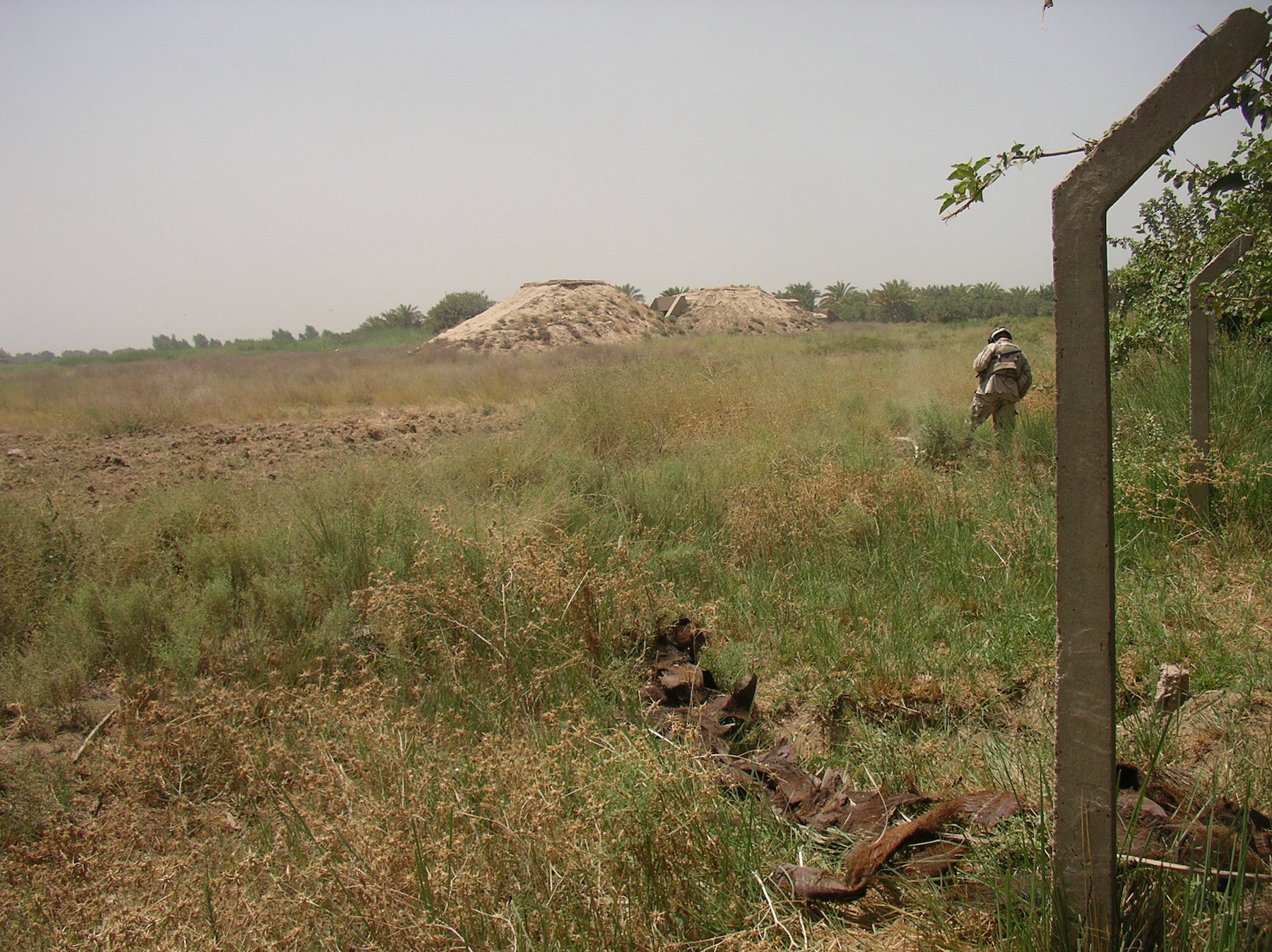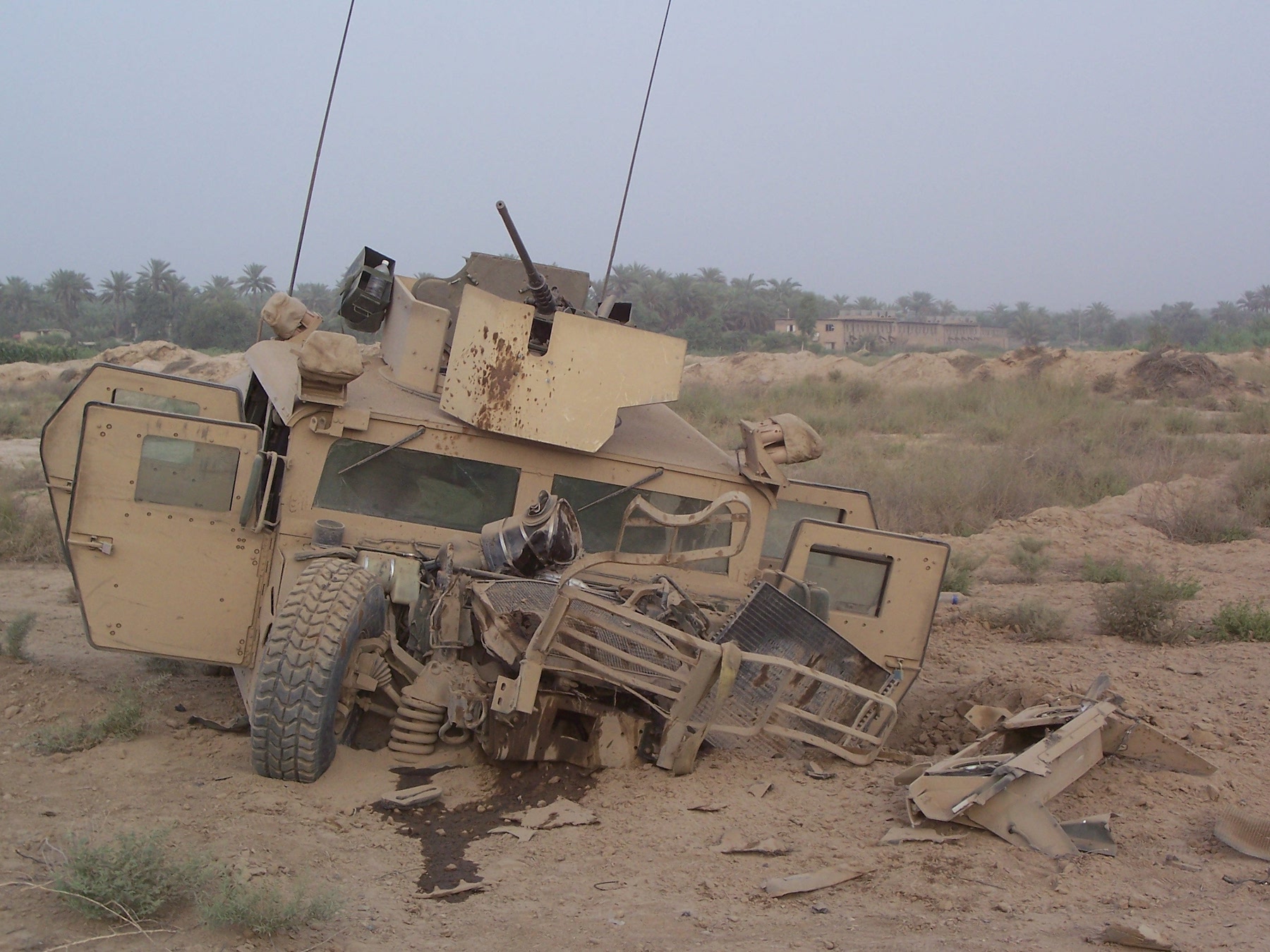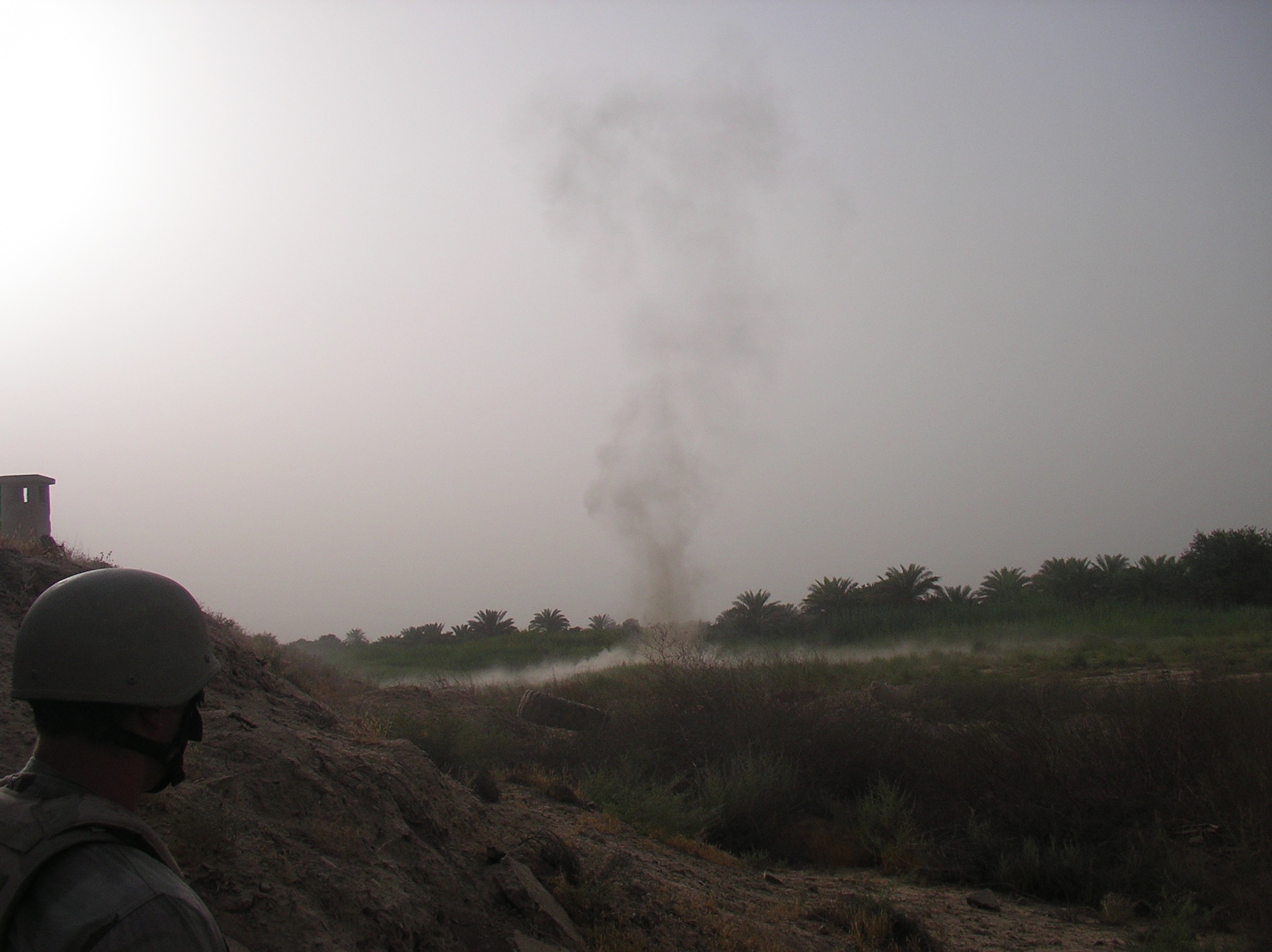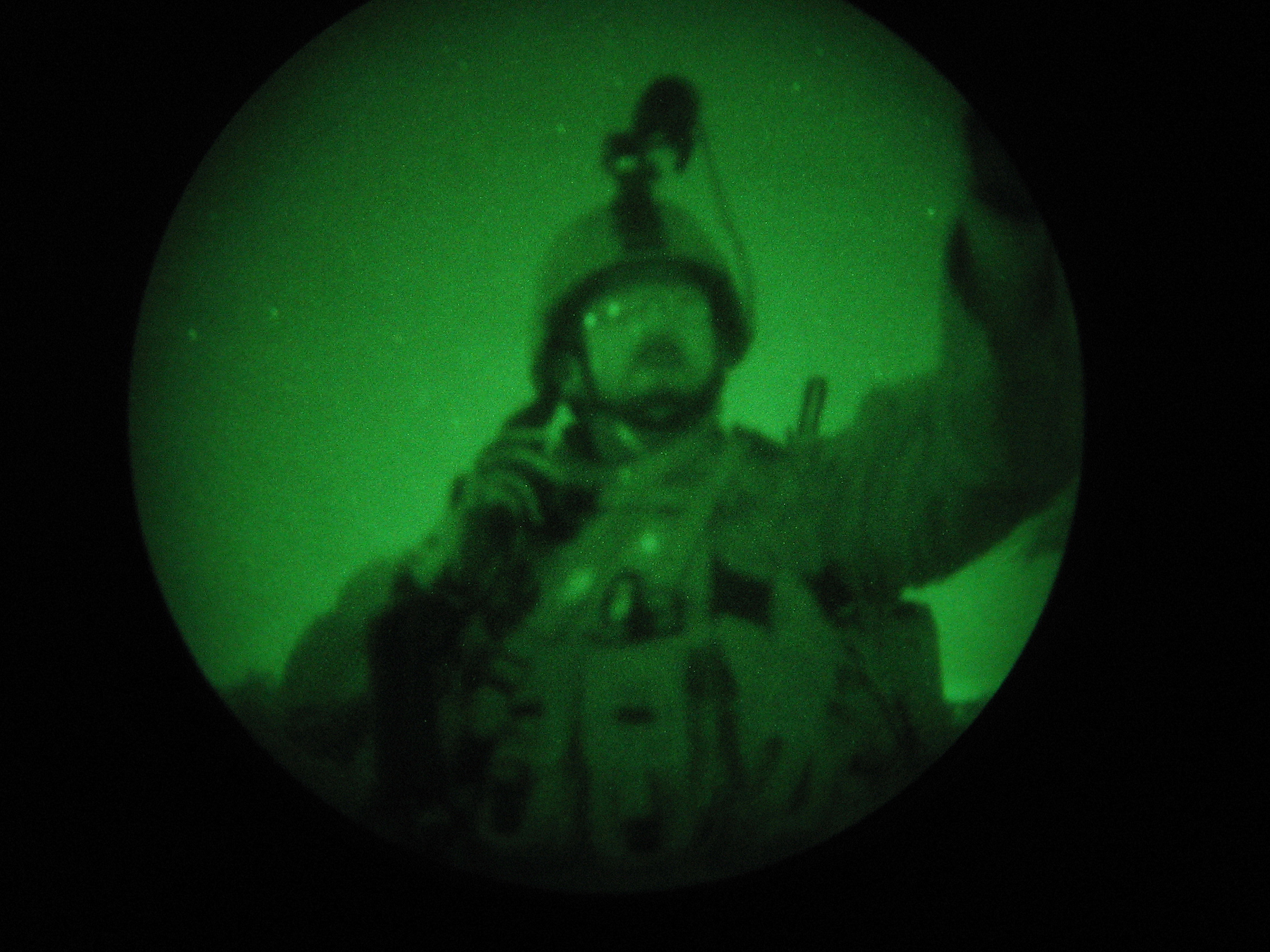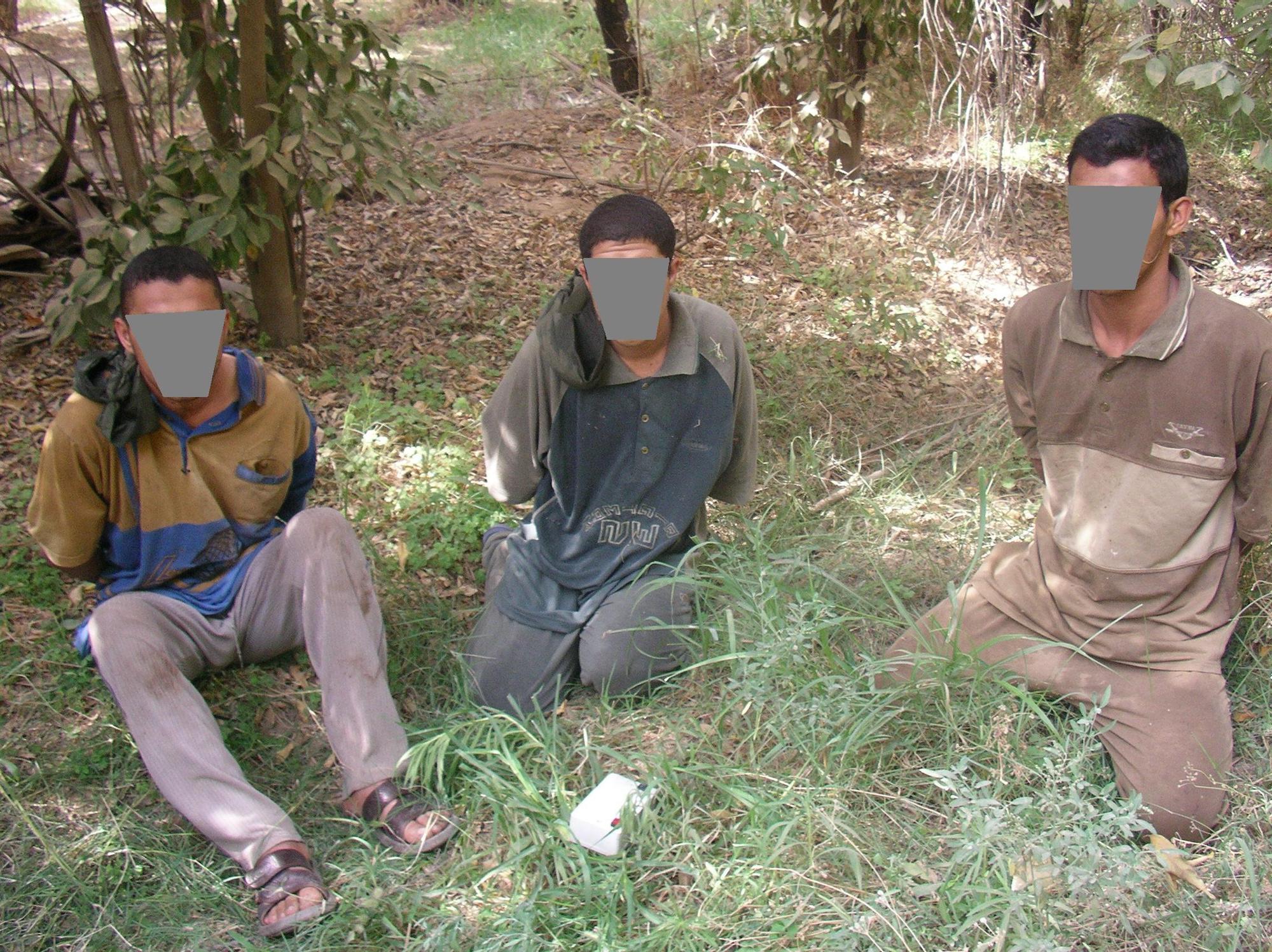
ccci-InsurgentsAndBox copy
Three insurgents who were going to trigger an IED against us. They brought the white firing box with them - whoops.
All policing is regional. Or so said the late Patrick A Rogers, of NYPD and other places. He meant that while there were similarities, there were significant differences in the job based on area codes and time zones. If we thought that was true, then it was doubly so for the court system. Never mind from one judge to another, look at changes between counties. And then the difference between a state criminal court and a federal one.
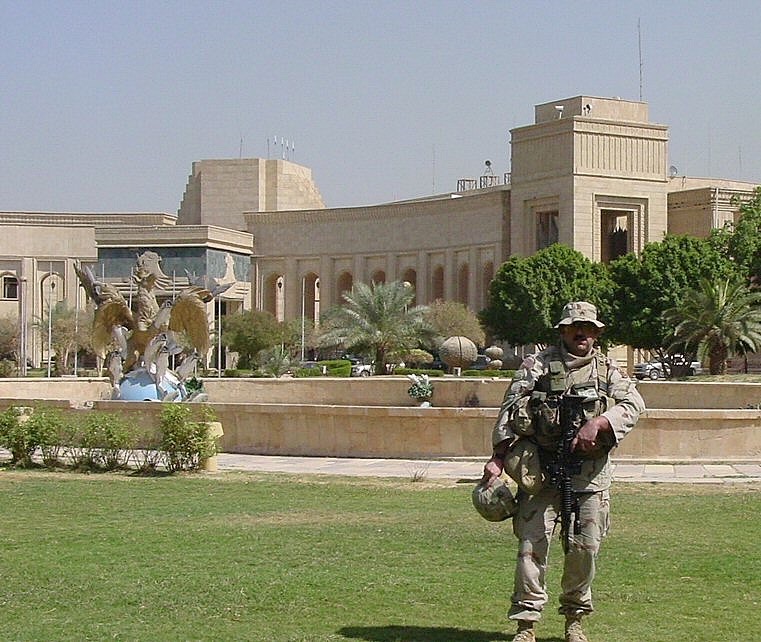
The author in front of the US Embassy and former Iraqi palace during one of my trips to the Iraqi court system.
Mobilized
In 2004, the National Guard infantry battalion I served with received a series of mobilization orders. At the start of the Independence Day weekend, “you guys are going to Afghanistan.” Within a few days, like most things in the military, that changed, and we were heading to Iraq.
By that time, I had fourteen years as a deputy sheriff – and had worked patrol, street gangs, and narcotics. I had been to court a few times. That included multiple counties, federal courts, and even a couple of federal grand juries. So, I had seen a lot of our legal system. No, I had seen parts of the greater San Francisco Bay Area and the Phoenix federal courthouse.
Iraq
We made it to Baghdad in mid-February 2005. The first area we were responsible for was the Karadha neighborhood. It was south of the Green Zone, across the Tigris River. Baghdad University was on the west end, old embassies, and mansion-size homes were in the middle of it along with some restaurants, shops, and apartments comprised the east end – before you hit the highway that separated it from Sadr City.
After a few months, we shifted to sector 47, which was south of Baghdad and where this article starts. Chemical Ali’s mansion was on the river in the northeast corner of the sector. Al Boetha was a village in the center, a lot of homes were mansion or compound size and belonged to former regime officials. Just to the south was Arab Jubour, another town that wasn’t terribly friendly to the American forces.
Detainees
Over the rest of our deployment, there were several times we detained locals and took them into custody. Some of these were named, identified targets; others happened because of how our encounters with them turned out. With my law enforcement background, if we were detaining someone and taking them to the brigade interrogation facility (BIF), I was usually one of the two soldiers writing up the sworn statement (think police report) on the event. Those sworn statements led to the next part of this story. Once we turned the detainees over to the BIF for processing and questioning, that was generally the end of it for us.
The Process
Twice though, those detentions led to criminal prosecutions in the Central Criminal Court for Iraq (CCCI or Triple C I). The Iraqis had learned that trying the insurgents or terrorists locally resulted in attacks and dead judges. That led to the formation of a court in downtown Baghdad, just outside of the Green Zone, where those detained and charged all over the country were prosecuted.
The judges were Iraqi as were the defense attorneys, interpreters, courts reporters, and guards (what we would call bailiffs). The prosecutors were Judge Advocate General (JAG) corps officers, the US military’s attorneys.
Twice I was summoned to appear before the Court and testify on insurgents we had detained. While that would normally be a subpoena, the Army dispensed that and just sent an order.
Preperation
So, how did this differ from the process I was used to? Both times, I had to travel to the US Embassy in the Green Zone, by helicopter, the day before. After landing at the nearby heliport, I walked over to the Embassy which was in the former Republican Palace. Then I had to find the JAG offices. Once there, court prep was pretty similar to what I normally did with local and federal prosecutors. We went through my statement and reviewed it. Looked at the evidence, which was nearly all photographic – because any digital evidence had gone elsewhere for exploitation, and we were not going to see it. The photographs were a significant part of the case. Unlike here where we would photo what we found, where we found it – there, the judges wanted photos of what we found with who was there.
That night we would stay in a transient tent adjacent to the most rocketed and mortared embassy in the world.
Court
In the morning, after breakfast, we loaded a bus that took us to a gate in the Green Zone wall right next to the CCCI building.
Once in the courthouse, I saw Deputy US Marshalls working with the Iraqi security staff and US Army MPs who were transporting and moving the detainees. Aside from the location, this was not completely foreign to me.
Like here, we were first in a waiting room downstairs and then the hallway outside of the courtroom.
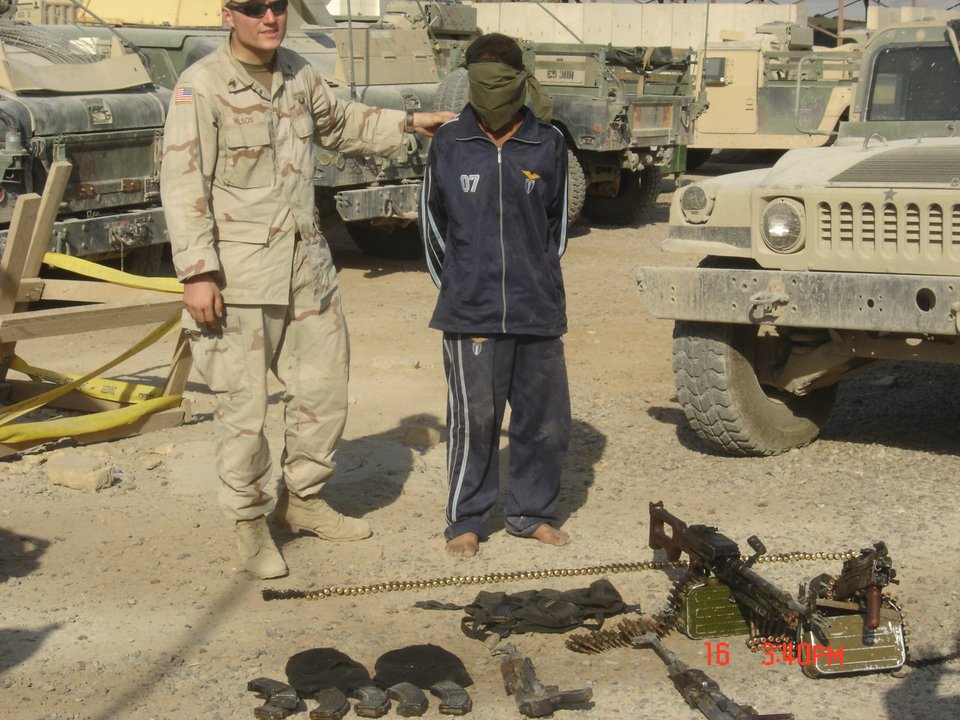
Another evidence photo – my roommate from the trip with an insurgent and all the weapons pulled out of his car.
Finally, we hit the courtroom and things got a little different. After being sworn in, the JAG prosecutor would ask their questions. While the questions were consistent, it was the process that made things interesting. So, here goes:
- JAG asks a question, and I answer it;
- The interpreter translates the question and answer for the judge, the defense attorney, and the defendant(s);
- The judge summarizes both aloud;
- The translator restates the summary;
- The court report writes the summary down in long-hand Arabic;
- Then repeat this whole process through the hearing for every prosecution and defense question.
When the asking, answering, and translating were all done, the judge either held them or he did not.
End Results?
In both cases I testified on, the BadGuys were held in custody. Beyond that, I do not know what the Iraqi penal system did with them. Nor do I know what, if anything, they did again. Those events are a couple of other stories, for another time. Even in the middle of a war zone, an insurgency, there was still police work to do.


